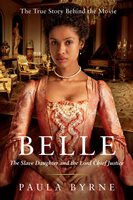Reviewed by Michael Haykin
“Belle: an 18th-century triumph of humanity”
A painting now hanging in Scone Palace near Perth in Scotland, once entitled in 1904 as “Lady Elizabeth Finch-Hatton with a Negress Attendant,” provides biographer Paula Byrne with the impetus for recounting the extraordinary story of Dido Belle (1761–1804), the illegitimate daughter of a captain in the Royal Navy and an African slave. Unlike the vast majority of children so conceived, Dido enjoyed privilege and wealth as she was raised by her great-uncle, William Murray (1705–1793), the first Baron of Mansfield, one of the most eminent jurists of the eighteenth century. Building upon a previous historical piece that identified the black girl in the painting as Dido and a handful of literary texts that relate to her life, Byrne skillfully interweaves the little that we know about Dido with the life of her father, Sir John Lindsay, and the lives of Lord and Lady Mansfield, her adoptive parents. Lord Mansfield was an ardent foe of the slave trade, and Byrne reckons that his love for his adopted daughter was instrumental in convincing him of the evils of slavery and the slave trade.
Mansfield’s ruling in the case of James Somerset in 1772, a slave who had run away from his master in England, been recaptured and sold to a slave trader bound for the West Indies, proved to be a key milestone in the fight against the slave trade by eighteenth-century abolitionists. Mansfield ruled in favour of Somerset’s freedom, and many viewed the ruling as having made slavery illegal on English soil. From there, the logic was obvious: if slavery were wrong in England, how could it be morally right for the English to have slaves abroad? This is the very question, in fact, asked by Fanny Price in Jane Austen’s Mansfield Park, which, in an appendix, Byrne shows has links to the story of Dido and Lord Mansfield. Byrne knows Austen particularly well, having written two major studies on the English author, one of which, Jane Austen and the Theatre, has been described by historian and biographer Paul Johnson as “the best book on Austen I have ever read.”
Byrne is a consummate researcher and has well researched the historical background of slavery, its accompanying moral degradation, and its tentacles throughout the English economy, especially through the massive consumption of sugar. She rightly notes that the deepest roots of the abolitionist movement were among the Quakers, who by 1760 were disciplining members who participated in the slave trade, and Evangelicals like William Wilberforce and Thomas Clarkson. In fact, it was arguments based upon principles derived from the Bible that eventually did most to rouse anti-slavery feeling in the British Isles.
While this book is largely a search for the biography of Dido, Lord Mansfield also comes across as a remarkable figure. He was able to rise above the racism endemic in eighteenth-century English society and social mores, and both in his home and in the courtroom do what was good, right and just. A movie version of book, starring Gugu Mbatha-Raw (as Dido) and Tom Wilkinson (as Lord Mansfield), was released here in the US in May.
Michael A.G. Haykin, Professor of Church History at the Southern Baptist Theological Seminary and Review Editor for Church History here at Books At a Glance, has written widely on religion and society in the 18th-century Britain.
